Creature Library
Hover over a creature to learn more!
Click a creature to learn more!
Angler Fish

Angler Fish's dorsal fin functions as a lure to attract prey to their mouths, which are huge. They are often called "frogfish," based on the size of their mouths.
Barracuda
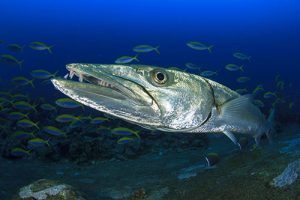
Barracudas are ferocious, bursting into a school of fish at 27 mph and biting anything in their way.
Basking Shark
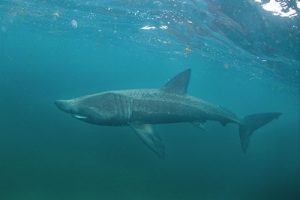
Basking Sharks are plankton eaters and like to catch rays on the surface.
Batfish

Batfish usually walk on the bottom; they are poor swimmers, but good kissers.
Blue Coral
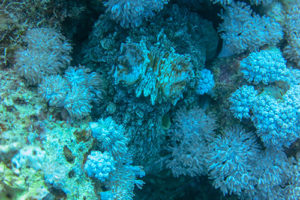
There are more than 2000 varieties of coral, with names like grooved brain, massive starlet, clubbed finger, orange cauliflower, and staghorn. Each represents a colony of tiny marine animals in the same class as sea anemones and jellyfish. Corals excrete hard carbonate, which builds, layer-by-layer, the reef. In the photo, an octopus disguises itself.
Butterfly Fish
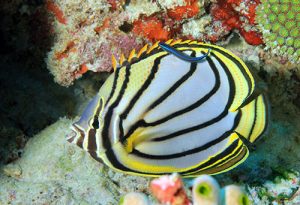
Butterfly fish mate for life and search the reef side-by-side for food.
Coelacanth

Coelacanth, "old four legs," preceded our terrestrial ancestors. Scientists thought they had become extinct 66 million years ago until one showed up in a fisherman's net in 1938.
Garden Eels

Garden eels curve in the direction of the current, which brings them food. At danger, they disappear into the sand.
Giant Clam

Giant Clams grow to be four-and-a-half feet long and can weigh more than 500 pounds. They eat algae growing on their mantle and close their shells at a shadow.
Hammerhead Shark

Hammerhead Sharks' wide-set eyes give them acute binocular vision and, also, allow them 360 degrees of vision in a vertical plane.
Kelp
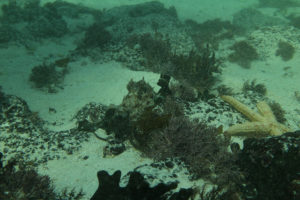
Kelp is neither plant, nor animal, nor fungus; it’s an alga, whose definition has yet to be agreed upon. There are about 30 varieties, including giant kelp, which can grow up to two feet per day and reach 250 feet. In the center of the photo, an octopus surveys.
Leafy Sea Dragon
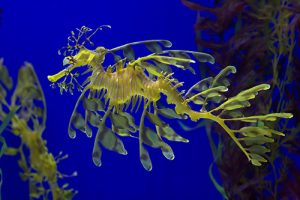
Leafy Sea Dragons move "sedately" via two nearly transparent dorsal fins. Their leaf-like protuberances are strictly for camouflage; the "leaves" give them the appearance of drifting seaweed.
Mantis Shrimp
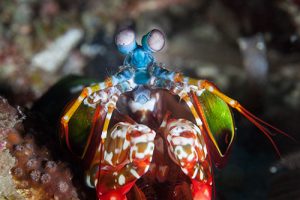
Mantis Shrimp beat open shells with their hammers, which slash fast enough to create heat comparable to the sun.
Moray Eel
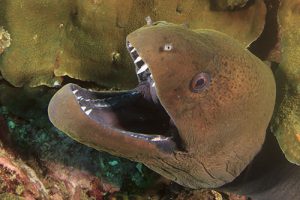
Moray Eels are carnivorous predators that feed on fish, crabs, and octopuses.
Sea Snake
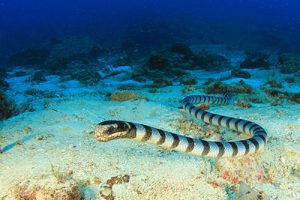
Sea Snakes have paddle-like tails for swimming and must return to the surface to breathe. Their venom is highly toxic but most are gentle and can bite without delivering venom.
Sea Wasps
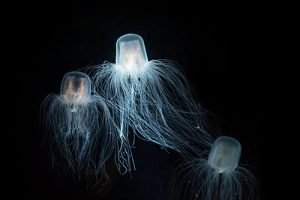
Sea Wasps are jellyfish whose venom is among the most deadly in the world. The venom attacks the heart and can kill a human being in three minutes.
Stinker Sponge
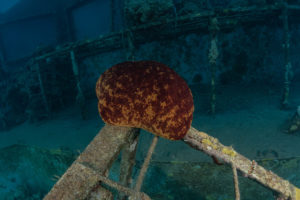
There are an estimated 9000 sponge varieties, with names like black-ball, strawberry vase, lavender rope, orange elephant ear, and giant barrel. Each is an animal, built to allow maximal water flow through its body, from which it extracts nutrients and oxygen. The photo depicts an octopus, pretending to be a stinker.
Wolf Eel
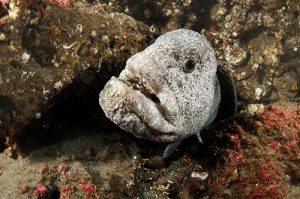
Wolf Eels are known to pair for life, often inhabiting a cave together. They are curious and rarely aggressive, although their faces could scare someone to death (or, could induce death from laughter; either way, one is dead).